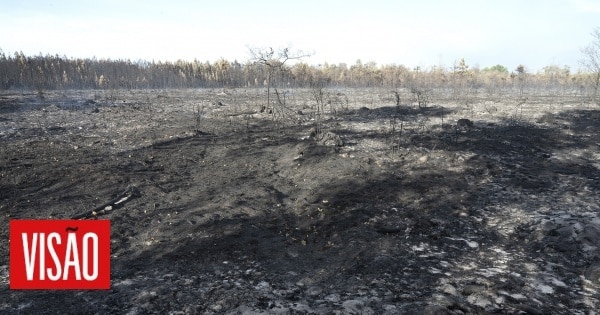“This summer we witnessed an alarming acceleration and the spread of forest fires across Europe and this time of year broke all records”, points out in an interview written to the Lusa agency the European Commissioner for Crisis Management, Janez Lenarcic.
He illustrates: “The number of large fires and the hectares of land burned amount to around 750,000 hectares, about three times the size of Luxembourg or a quarter of Belgium”.
According to data from the community executive, until October 1st, the burned area increased by 30% compared to 2017 (the previous maximum) and 170% since the beginning of records at European level, in 2006.
“The images we have all seen of the Gironde in France, of the Serra da Estrela National Park in Portugal, but also of the Czech Republic, Germany, Spain, Karst regions between Italy and Slovenia, will stay with us as a reminder of the severity of the forest fires that are raging. occur on this continent”, says Janez Lenarcic, in an interview with Lusa.
Even so, “once again, European solidarity remained intact thanks to the strategic decisions taken in previous years to gather capabilities at European level and share them across borders”, adds the official.
This year, the European Mechanism’s firefighting fleet included 12 planes and a helicopter made available to Member States by Croatia, Spain, France, Greece and Italy.
In 2022, the Emergency Response Coordination Center (CCRE) received 11 requests for assistance in forest fires, with 33 firefighting planes and eight helicopters being mobilized through the EU Civil Protection Mechanism (rescUE), to which joined 350 firefighters.
Two of these requests for assistance were made by Portugal, on 9 July and 19 August.
The CCRE is at the heart of rescUE, coordinating the delivery of assistance to disaster-stricken countries, such as relief items, expertise, civil protection teams and specialist equipment.
The center ensures the rapid deployment of emergency support and serves as a coordination platform between all EU member states, seven other participating states, the affected country and civil protection and humanitarian experts.
In addition, the EU’s Copernicus Satellite Emergency Mapping Service has been activated 53 times for wildfires in 14 European countries.
Recognizing that the summer of this year “will most likely not be an isolated episode, but part of an alarming trend”, Janez Lenarcic defends the need to “strengthen the collective response mechanism, especially the existing capacities”.
“It became clear that we have to do more and we have to do more at European level too, we have to find ways to ease the national burden more quickly. [porque] solidarity across Europe, when many or all are affected at the same time, cannot be taken for granted”, stresses the European official.
“All these catastrophes are in particular reinforced by the new reality of climate change that we can only face together”, concludes Janez Lenarcic.
Earlier this month, the European Commission proposed a reinforcement of €170 million in the EU’s 2023 budget to fight forest fires, which recorded record numbers this year.
The EU’s transition fleet will now comprise a total of 22 aircraft, four helicopters, as well as more pre-positioned ground teams.
From 2025, the fleet will be further strengthened through an accelerated acquisition of planes and helicopters.
ANE (IG) // SCA

